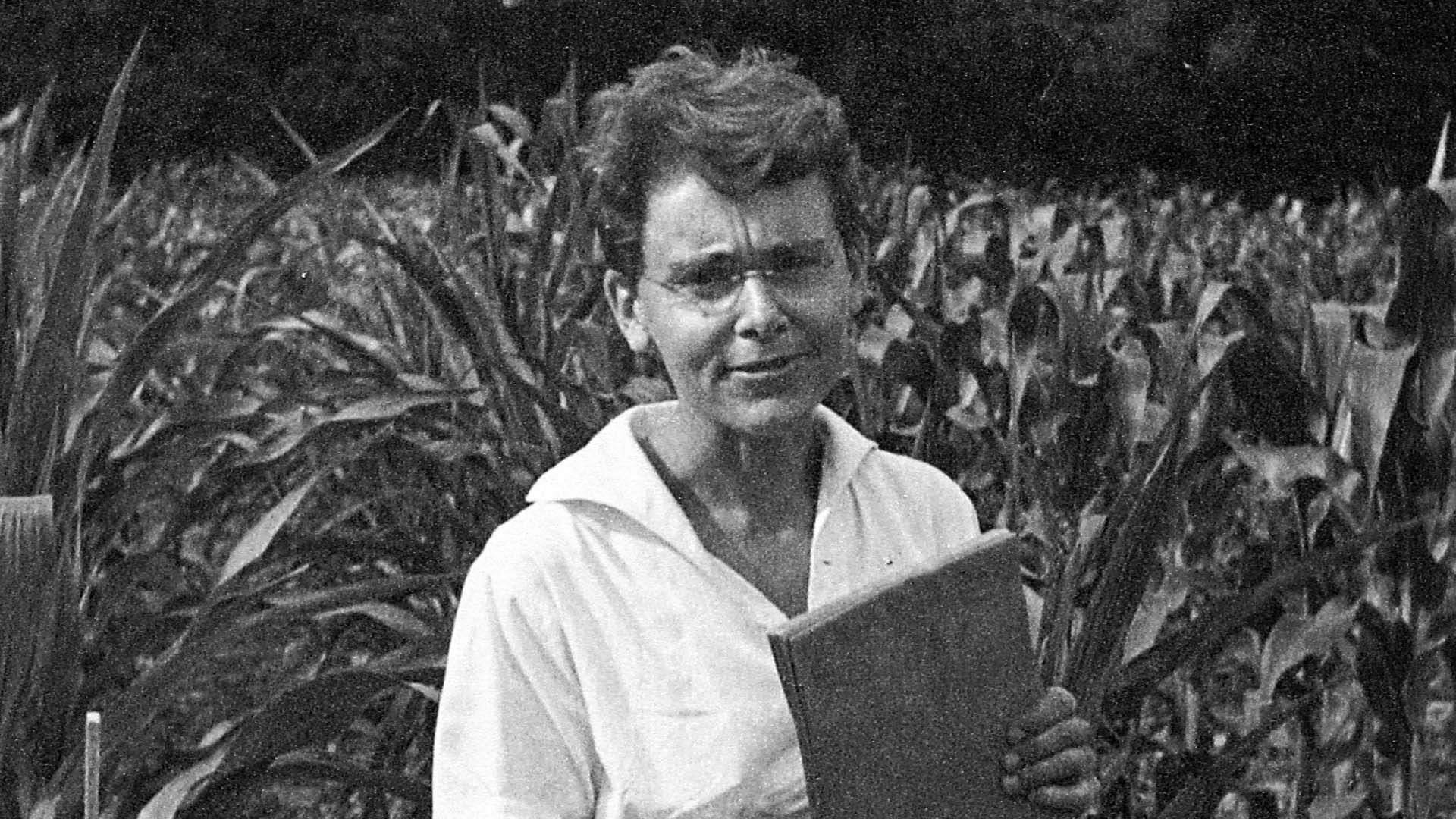Barbara McClintock was a scientist from the United States whose groundbreaking contributions transformed the study of genetics. Her investigations not only uncovered essential genetic processes but also deepened the comprehension of genome behavior. McClintock’s accomplishments are particularly remarkable considering the period during which she conducted her work, when genetics was still a developing field and opportunities for women in science were restricted.
Genetics before McClintock
Prior to McClintock, the scientific community generally believed that genes had fixed positions on chromosomes. The concept of genomic stability had not yet been seriously questioned. Discoveries by Gregor Mendel, Thomas Hunt Morgan, and Charles Darwin provided a framework of inheritance, chromosomal theory, and evolutionary change. However, these frameworks largely depicted genomes as stable blueprints, rarely subject to internal change outside of mutation due to external agents.
Initial Studies by McClintock: Corn Cytogenetics
Barbara McClintock carried out a significant portion of her pioneering studies on maize (corn) at Cold Spring Harbor Laboratory. Her skill in maize cytogenetics—examining cellular structures, chromosomes, and their connection to gene functions—was unmatched. By employing light microscopy and original staining methods, she was able to describe the physical properties of chromosomes during cell division, revealing processes that had escaped scientists before.
A notable initial accomplishment was her investigation of chromosomal crossover during meiosis. Through careful observation, McClintock showed that chromosomes actually swap sections. This offered visual evidence of genetic recombination, backing theories suggested by Morgan’s fruit fly studies.
The Unveiling of Jumping Genes
McClintock’s most notable achievement was her discovery of transposable genetic elements, or “jumping genes.” While conducting experiments during the 1940s and early 1950s, she noticed unusual color patterns in maize kernels. She theorized that certain genes could move around in the genome, affecting the function or regulation of other genes.
By studying the Activator (Ac) and Dissociator (Ds) elements, McClintock demonstrated how certain genetic sequences could move to different locations on a chromosome. For instance, the presence of Ds in a specific position could disrupt the color gene in maize, leading to mottled or variegated kernels. Ac could facilitate the movement of Ds, and their interactions led to a variety of observable kernel patterns.
This approach not only accounted for differences in color but also offered a framework for understanding how genes can be controlled or activated and deactivated—ideas that are crucial to contemporary epigenetics.
Scientific Influence and Early Rejection
Although these discoveries were crucial, McClintock’s peers remained doubtful. The idea of gene movement was so groundbreaking that it clashed with the fixed and unchanging perception of the genome that was common then. For many years, her research was pushed aside, and references to her conclusions were few and far between.
It was not until the late 1960s and 1970s, as similar elements were identified in bacteria (such as insertion sequences in E. coli), that the broader scientific community recognized the accuracy and importance of McClintock’s discoveries. Her findings became foundational as mobile genetic elements were found to play key roles in mutation, genome structure, antibiotic resistance, and evolutionary adaptation.
Wider Importance and Continuing Impact
Many years after her time, McClintock’s studies are viewed as foundational in the field of molecular genetics. Jumping genes, also known as transposable elements, have been discovered in almost every species, including humans, where they comprise a significant part of the genome.
Additional research building on her findings has associated mobile genetic elements with important biological processes:
1. Genetic Variation: Mobile elements play a role in genome diversity and evolutionary change. 2. Genome Flexibility: Transposable elements help organisms respond to environmental pressures. 3. Gene Control: Transposons can act as control elements, impacting the timing and method of gene expression. 4. Human Health: Certain diseases in humans, such as specific types of cancer, are linked to transposon activity. 5. Biotechnology: Advances like gene therapy and gene editing are based on insights from mobile genetic sequences discovered by McClintock.
Acclaim and Heritage
Barbara McClintock was honored with the Nobel Prize in Physiology or Medicine in 1983—the sole female recipient of an individual Nobel in this discipline. The accolade recognized her discovery of “mobile genetic elements,” affirming research she had carried out years earlier and highlighting her determination despite doubt.
Her methodologies—direct observation, hypothesis through experimentation, and interpretation of unpredictable results—brought an integrative vision to genetic science. She remains an emblem of the power of curiosity and independent thinking in research.
The studies conducted by Barbara McClintock significantly transformed our grasp of genomics, revealing its nature as both adaptable and active, contrary to being just fixed. Her exploration with corn shed light on the ways genetic information can rearrange, create variation, and evolve. The extensive following research on mobile genetic elements has shown how individual breakthroughs can redefine whole scientific frameworks, ultimately providing a more profound understanding of life’s structure.




:max_bytes(150000):strip_icc():focal(749x0:751x2)/Jared-Isaacman-329f219aed0e4faa8b341aa46849d3c2.jpg)